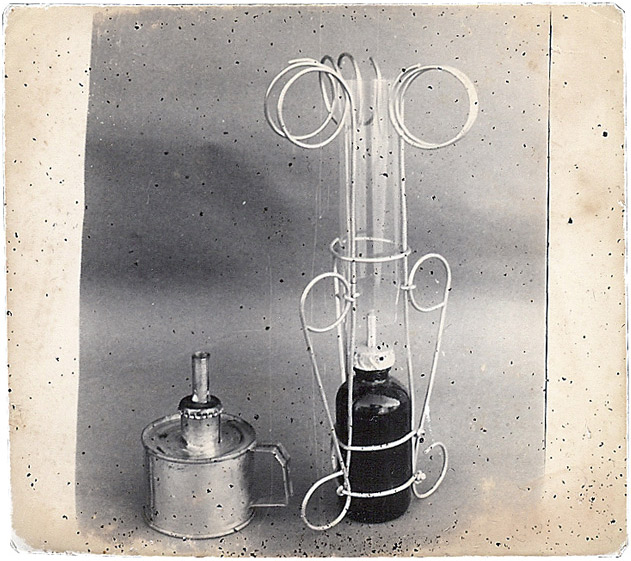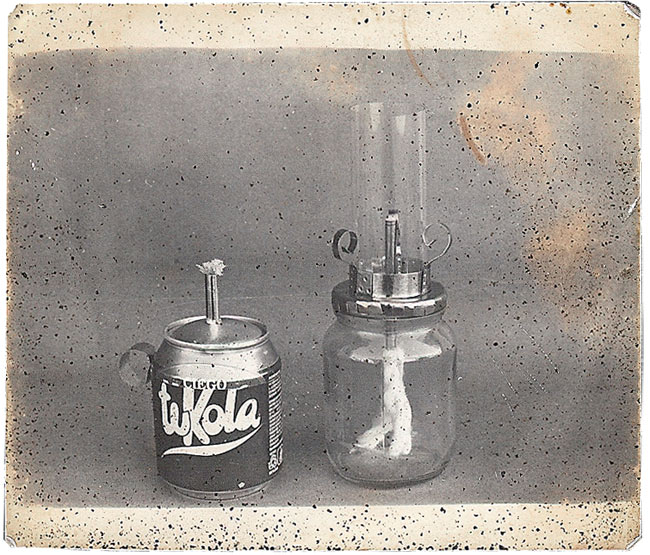Documentos contaminados (1999) _english below
Me interesan los documentos corrompidos, impuros, emponzoñados por la naturaleza y esencialidad del objeto que investigan. Uno de mis primeros archivos infestados data de 1999. Ocurrió durante un viaje de un mes por la isla en compañía de Penélope de Bozzi. Realizábamos una extensiva documentación en diapositivas con una ayuda económica de FIACRE que Penélope recibió para producir nuestro libro Objetos Reinventados.
En Holguín propuse diversificar el proceso de registro para ahorrar rollos de diapositivas. Al comprar algunas lámparas improvisadas las lleve a una casa/estudio de fotógrafo. La persona se dedicaba, según aclaraba el cartel en la puerta de su casa, a tomar retratos en blanco y negro para carnets de identidad, licencias de conducción, visas y pasaportes. Los estudios fotográficos en el hogar estaban entre los escasos negocios permitidos en esos años. Estos fotógrafos disponían de un set improvisado en la sala con una silla y un fondo blanco, posiblemente una sabana, sobre el cual se tomaba la fotografía. Inicialmente yo estaba interesado en contaminar nuestro proceso de registro con el formato (retrato ID), el fondo (backdrop) y otras calidades especificas de este tipo de negocio, pero el fotógrafo fue mas allá e insistió en no salirse de su método de trabajo: me hizo respetar el precio, la cantidad de copias por cada foto y como era la costumbre me pidió recogerlas al final de la tarde. Cada fotógrafo que visité durante ese viaje tuvo similares exigencias.
Contaminated documents (1999)
I am interested in corrupted documents that are impure and poisoned by the nature and essentiality of the object they investigate. One of my first infested files dates back to 1999. It happened during a month-long trip around the island in the company of Penelope de Bozzi. We did extensive slide documentation with financial support from FIACRE that Penelope received to produce our book Objetos Reinventados (Reinvented Objects).
In Holguin, a city east of the island, I proposed diversifying the documentation process to save rolls of slides. When I bought some improvised lamps, I took them to a photographer’s house/studio. According to the sign on his house door, the person was dedicated to taking black and white portraits for ID cards, driver’s licenses, visas, and passports. Home-based photographic studios were among the few businesses allowed in those years. These photographers had a makeshift set in the living room with a chair and a white background, possibly a sheet, on which the photograph was taken. Initially, I was interested in contaminating our registration process with the format (portrait ID), the background (backdrop), and other qualities specific to this type of business, but the photographer went further and insisted on sticking to his method of work: he made me respect the price, the number of prints for each photo and as was the custom he asked me to pick them up at the end of the afternoon. Every photographer I visited during that trip had similar demands.

